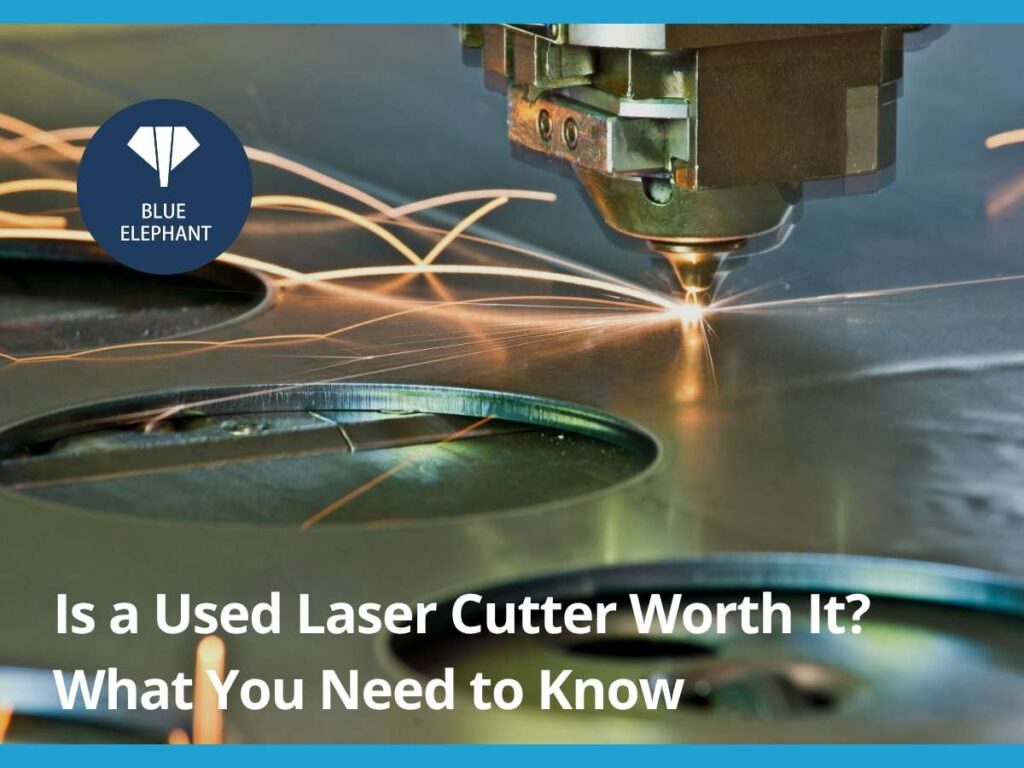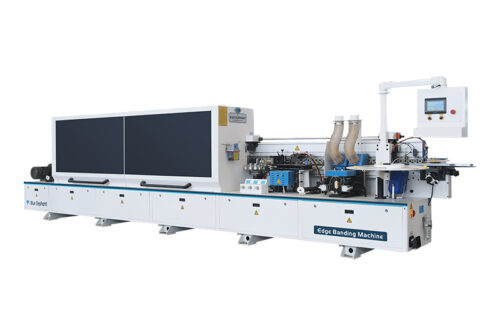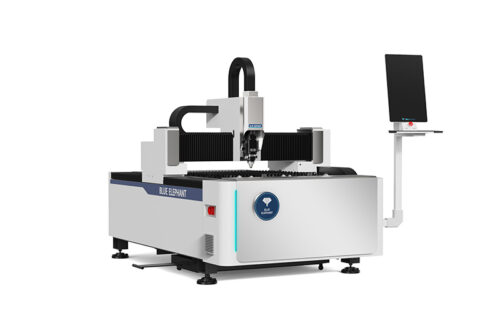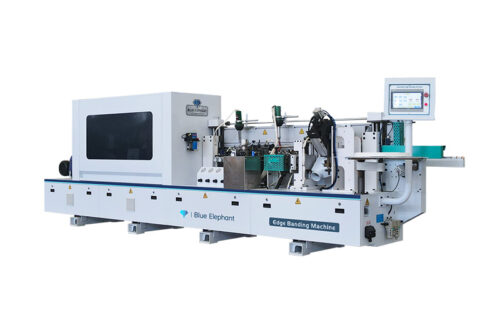I learned the hard way that not every “great deal” on a used laser cutter is actually great. A few years ago, I thought I scored a bargain on a secondhand unit, only to find myself dealing with endless maintenance issues and unexpected costs.
That experience made me rethink whether buying used is really worth it. Can a pre-owned laser cutter actually be a smart investment for a business, or is it a risky gamble?
This review is based on real-world insights from working with both new and used laser cutters. No sugarcoating, just the facts on what works, what doesn’t, and what to watch out for.
By the end of this article, you’ll know exactly what to check before buying, the potential risks, and whether a used laser cutter makes financial sense for your business.
So, let’s dive in!
1. Advantages of Buying a Used Laser Cutter
Saving money is one of the biggest reasons businesses consider buying used equipment. A well-maintained secondhand laser cutter can perform just as well as a new one, offering significant savings without sacrificing efficiency. But cost isn’t the only benefit, there are a few other reasons why a used machine might make sense.
Cost Savings
One of the most compelling reasons to consider a used laser cutter is the potential for significant cost savings. Businesses can allocate these savings toward other critical investments like materials, training, or marketing. Opting for a used machine can provide access to high-quality equipment at a fraction of the cost, making it a more feasible option for businesses with budget constraints.
Immediate Availability
A used machine allows businesses to start production right away without waiting weeks or months for delivery. In contrast, used machines are typically available for immediate acquisition and deployment. This immediacy can be particularly advantageous for businesses aiming to quickly expand their production capabilities or meet sudden increases in demand.
Established Performance History
A pre-owned laser cutter comes with a track record of performance. This means you can gauge its efficiency based on real-world use rather than relying solely on manufacturer claims. By reviewing maintenance records and previous usage, you can assess the machine’s reliability and operational efficiency. This historical data can provide valuable insights into the machine’s longevity and potential future performance.

2. Disadvantages of Buying a Used Laser Cutter
While a used laser cutter might seem like a bargain, there are some hidden risks that could cost you more in the long run. Without proper vetting, you might end up with a machine that requires constant repairs or lacks the technology to keep up with modern demands. Here are some key drawbacks to consider.
Lack of Warranty and Support
One significant drawback of purchasing used equipment is the absence of manufacturer warranties and support services. This means that if something goes wrong, repairs will come directly out of your budget. Without these assurances, your business may be responsible for any repair costs, which can be substantial depending on the nature of the issues encountered.
Potential for Hidden Issues
Used machines may harbor underlying problems not immediately apparent during initial inspections. Without proper vetting, you could inherit mechanical or software issues from the previous owner. These issues can lead to unexpected downtime and repair expenses, disrupting your business operations and affecting profitability.
Technological Obsolescence
Laser cutting technology is continually evolving, with newer models offering enhanced features, improved efficiency, and better compatibility with modern software. Falling behind on technology can reduce productivity and limit future business opportunities. A used machine may lack these advancements, potentially limiting your business’s competitiveness and ability to meet specific client requirements.
Limited Availability of Parts
As laser cutters age, sourcing replacement parts can become challenging, especially if the manufacturer has discontinued the model. This can lead to longer repair times and increased costs when components need to be replaced. This scarcity can lead to extended downtime and increased maintenance costs.
3. Comparing Used, Rental, and Buying New
Deciding between buying used, renting, or purchasing new can significantly impact your business’s operational efficiency and long-term costs. Each option comes with its own set of benefits and drawbacks, so it’s essential to evaluate them based on your specific needs and budget.
Choosing between buying used, renting, or purchasing new isn’t always straightforward. Each option has its own pros and cons, depending on your business needs and budget. Let’s break it down.
| Factor | Used Laser Cutter | Rental Laser Cutter | New Laser Cutter |
| Upfront Cost | Lower | Low (monthly fees) | High |
| Long-Term Cost | Varies (depends on repairs) | High (costs add up over time) | Predictable (warranty and lower maintenance) |
| Technology | May be outdated | Access to latest models | Latest models with advanced features |
| Warranty | Usually not included | Included (handled by rental provider) | Included (manufacturer coverage) |
| Support | Limited, depending on the seller | Included (typically covered by provider) | Full support from manufacturer |
| Customization | None (you buy as-is) | Limited (dependent on rental provider) | Yes (choose features and specs) |
| Availability | Immediate | Immediate | Delayed (lead times vary) |
4. Maintenance and Repair Considerations for Used Laser Cutters
A used laser cutter may come with some wear and tear, but with the right maintenance, it can still provide years of reliable service. Preventative care is key to avoiding costly repairs and downtime. Here are six essential maintenance areas to focus on.
- Regular Cleaning: Dust and debris can accumulate on the machine’s components, affecting cutting accuracy and efficiency. Regular cleaning of the laser lens, mirrors, and work area is essential to maintain optimal performance.
- Scheduled Inspections: Routine inspections can help identify wear and tear on critical components like belts, bearings, and gears. Early detection of issues allows for timely repairs, preventing unexpected downtime.
- Cooling System Maintenance: Laser cutters generate significant heat during operation. Ensuring the cooling system functions correctly is vital to prevent overheating, which can cause severe damage to the machine.
- Laser Alignment Checks: Over time, the alignment of the laser can shift, impacting cutting precision. Regularly checking and realigning the laser ensures clean, accurate cuts and prevents wasted materials. Misalignment can lead to uneven engraving and decreased efficiency.
- Lubrication of Moving Parts: The moving parts of a laser cutter, such as rails and motors, require lubrication to reduce friction and wear. Proper lubrication helps maintain smooth operation and prevents mechanical failures that could halt production.
- Software and Firmware Updates: Older machines may require software updates to remain compatible with newer design programs. Staying current with updates can also help prevent compatibility issues with modern design files.
A used laser cutter may come with some wear and tear, but with the right maintenance, it can still provide years of reliable service. Preventative care is key to avoiding costly repairs and downtime. Here are the most important maintenance steps to follow.
5. Tips to Consider Before Making a Decision
Choosing the right laser cutter requires careful evaluation of various factors to ensure it aligns with your business goals. A rushed decision can lead to unexpected costs, operational inefficiencies, or equipment that doesn’t meet your production needs. Here are key tips to help you make an informed choice.
Assess Your Business Needs
Determine the primary purpose of the laser cutter in your business. Consider the materials you’ll be cutting, the production volume, and the level of precision required. A small-scale workshop may not need an industrial-grade machine, while a manufacturing business might require a high-powered laser cutter for continuous operation.
Compare Total Cost of Ownership
Beyond the purchase price, factor in maintenance, repairs, software updates, and operational costs. A cheaper used machine might require frequent repairs, making it more expensive in the long run. Weigh these costs against the benefits of a new or rental option.
Check the Machine’s Condition (For Used Purchases)
If you’re considering a used laser cutter, thoroughly inspect its condition. Check for wear and tear, verify its service history, and test its functionality before committing. Buying from a reputable seller with maintenance records can help minimize risks.
Evaluate Software Compatibility
Laser cutters rely on design software to create precise cuts. Ensure the machine you choose is compatible with your preferred software and can handle various file formats. Older machines may require upgrades or additional software investments.
6. Why Buying New is a Better Option
Investing in a new laser cutter might seem like a significant expense upfront, but it offers long-term benefits that outweigh the initial cost. New machines come equipped with the latest technology, providing higher efficiency, improved cutting precision, and better software integration. Businesses that rely on consistent output and minimal downtime will benefit from the reliability and performance of a brand-new unit.
Another advantage is the manufacturer support and warranty that comes with new machines. Having direct access to technical support, software updates, and replacement parts can save time and money in the long run. With a used machine, repairs and part replacements can be unpredictable and expensive, whereas new equipment gives businesses peace of mind with coverage from the manufacturer.
If you’re considering upgrading, why not explore Blue Elephant, a laser cutter manufacturer from China? They offer a range of high-quality, customizable machines designed for different business needs. Whether you need a small-scale unit or a high-powered industrial cutter, a new machine from Blue Elephant could be the right choice for your business.
Conclusion
That used laser cutter I bought? It taught me everything I needed to know, just the hard way.
Now, you don’t have to make the same mistake. In this guide, we covered what to watch for, how to maintain a used unit, and why buying new might be smarter.
If you’re serious about long-term value, companies like Blue Elephant in China offer solid, reliable options.
Your business deserves equipment you can trust.
Contact us today, and let’s make that decision easier.
Check Out These Additional Resources
We’ve gathered a few more articles that could help you out. Check them out for more great advice:
Still haven’t found what you’re looking for? Don’t hesitate to contact us. We’re available around the clock to assist you.













